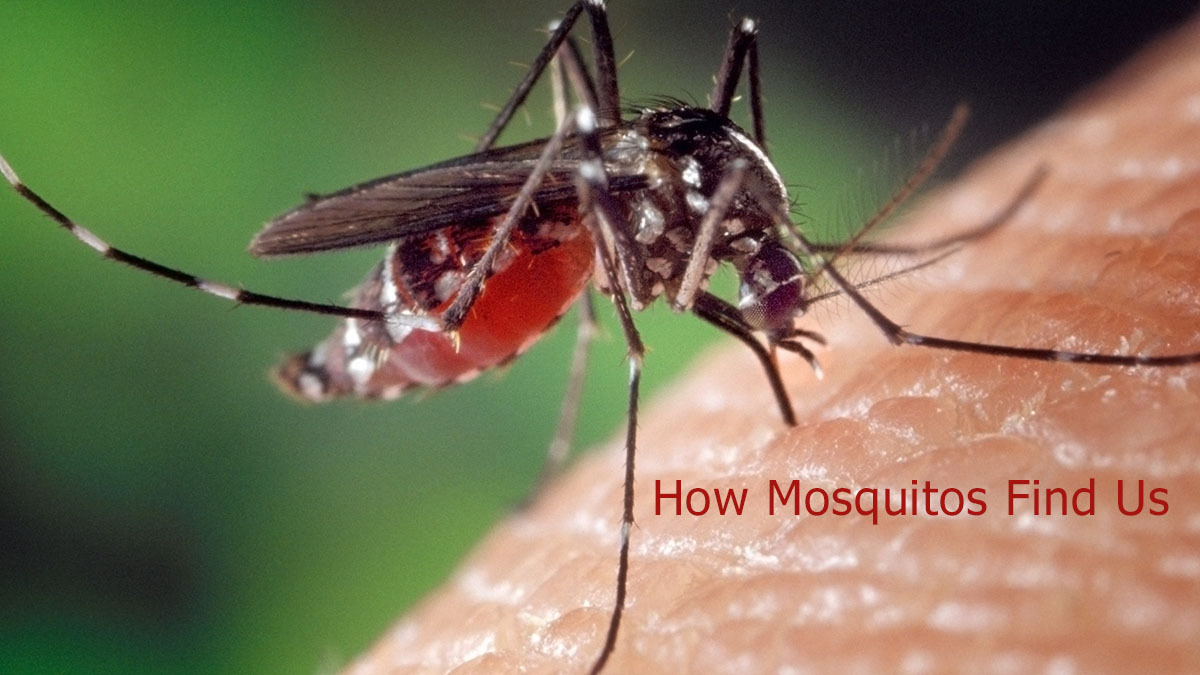The Link Between Gum Disease and Alzheimer's
Alzheimer's is the most common form of dementia and thereby the fifth leading factor of death worldwide. Over 5 million Americans suffer from this degenerative disease. The exact cause and therefore cure has befuddled scientists and researchers for decades.
Scientists have known that abnormal clumps, amyloid plaques, and tangled bundles of fibers, tau, are involved.
Up until now, these features were the focus of the battle against Alzheimer's, but a recent study shows another possible cause: gum disease.
Stock Images and Video of Alzheimer’s and Gum Disease
This study indicates that amyloid plaques and tau bundles might be existent as a reaction to a specific gum disease bacteria, Porphyromonas gingivalis, traveling to the brain. Overdevelopment of amyloid and tau proteins leads to the blocking of neuron function and the degeneration of brain cells.
The hippocampus is where this process usually begins. Neurons will die as they lose function, and the more this happens, the more the brain is affected. The areas that handle memory are affected first, and eventually the disease will spread to cells that control body function.
In the mouth, Porphyromonas gingivalis, known as Pg, leads to chronic periodontitis, causing chronic inflammation and potential tooth loss. If left untreated, this bacteria can spread into the brain. Pg was found in 51 of 53 Alzheimer patients studied. This connection offers hope for preventing and halting the disease.
Tests to begin formulating a drug that will prevent or help those at risk have already started. In mice, scientists were successful in reducing the number of Pg bacteria in infected brain cells, thereby stopping the production of the toxic proteins amyloid and tau.
There is finally hope, as most people have been touched by this disease, either themselves or by someone they care for.
newscientist.com
webmd.com
nypost.com
cnn.com
cbsnews.co
The Women of Coding
In 1833, Lady Ada Lovelace, the only legitimate daughter of Lord Byron, became the first computer programmer when she created a machine for computing called the Analytical Engine. Her partner, Charles Babbage, designed the hardware, while Lovelace focused on the machine’s inner workings or what we now call “software.” Bringing the machine to its absolute limit, Lovelace published the first computer algorithm in 1843.
Lovelace’s legacy would continue into the 20th century, as women entered the workforce. While men were busy fighting WWII, a group of female computer scientists, including Betty Holberton, Kay McNulty, Marlyn Wescoff, Ruth Lichterman, Fran Bilas and Betty Jean Jennings programmed the ENIAC, one of the first general purpose computers. Although they were called “subprofessionals” by their peers and “refrigerator girls” by historians, Hoberton and her team used ENIAC to make crucial calculations on the trajectory of ballistic missiles for the US and its allies.
View More Women of Coding
The military would give rise to another great coder when Grace Hopper, a professor and computer scientist, joined the navy reserve and developed one of the earliest programming languages, COBOL. Hopper went on to create the first compiler, a device for synthesizing written language into code. By the end of her career, she had risen to the rank of rear admiral and even got a US destroyer named after her.
In the 1980’s women’s participation in coding suddenly dropped. While the reason is unknown, Sara Kiesler, a social scientist, believes the advent of personal computers was chiefly responsible. Kiesler argues that when computers entered the home, parents made them the domain of boys and not girls. The culture surrounding tech became male-dominated and many women decided to opt out of the field completely. Female participation in programming was cut in half, and today only 18 percent of computer science graduates are women.
If you have a daughter or niece this Women’s History Month, encourage their interest in computers! Tell them that a career in coding is a girl thing too and that they can make history!
Click the link above to see more great female programmers and check out our storefront for great science gifts.
Science Prints, Masks, Mugs, Phone Cases and More
nytimes.com
history.com
Climate Change, Extreme Weather and the Jet Stream
In the last decade or so, we’ve experienced giant tornados, damaging wildfires, flood-inducing rainstorms, fatal heat waves, and droughts destroying crops and livestock like never before.
At the same time, the polar jet stream, a westerly wind generated by solar radiation and the corolla effect (a phenomenon that creates our weather) has been behaving in unprecedented ways. Scientists believe this is not a coincidence, rather, it is related.
Stock Images of Climate Change,
Extreme Weather and the Jet Stream
Normally, the jet stream travels either in a straight line or undulates in waves called Rossby waves. Rossby waves bring warm air northward and cold air southward. This can create a temporary heat wave or a rainstorm.
The jet stream is powered by the temperature differential between the cold arctic air and the warmer air in the lower latitudes. As global warming continues to warm the arctic air, the jet stream is losing its power. The Rossby waves have become larger, expanding much further north and south than before.
They are bringing temperatures and weather that is unusual for our local climate. Records show that Southern U.S. states now get snow more regularly than in the past.
Once Rossby waves, especially weakened ones, reach a certain size they can stall in place, permitting a heat wave or a rain weather system to last days or weeks longer than the norm.
With no end in sight to global warming or even a slowing of it, we are likely to be in for even more extreme weather that increases in intensity and stays put for longer.
Fine Art Prints of Wild Weather on Metal & Canvas
A growing number of scientists are predicting that perhaps as soon as 2050 the climate in the southern latitudes may be unlivable and the Arctic could be our new temperate zone.
Get ready to move north, and bring your umbrella, sunscreen and snow boots.
wikipedia.com
scientficamerican.com
sciencefriday.com
What You Need to Know About Crohn's Disease and Ulcerative Colitis
Crohn’s disease and ulcerative colitis are largely unfamiliar terms. Hundreds of thousands of Americans are affected by these conditions, however many people still don’t know how to identify the two, or understand how they relate and differ.
Crohn’s and colitis are both inflammatory bowel diseases (IBD), which result from an overactive immune response that treats the normal, healthy contents of the colon (such as good bacteria and food) as foreign invaders. When the immune system detects a foreign substance, it sends a sea of white blood cells to the site of this substance, which in turn causes inflammation. Victims of IBD struggle to experience healthy digestion that doesn’t involve their system getting unnecessarily attacked by an immune response.
The body’s reactions to these two diseases are often described similarly: loss of appetite, weight loss, urgent bowel movements, diarrhea, and fatigue. They are both long-term (chronic) conditions; individuals who are affected will likely have symptoms that come and go throughout their lives. The onset of symptoms tends to be inconsistent, and when there are time periods without symptoms the diseases are deemed to be in remission.
Stock Images of Crohn’s Disease and Ulcerative Colitis
Although Crohn’s and colitis have some similar traits, they are certainly not the same condition.
Ulcerative colitis causes inflammation that gives rise to ulcers in the inner lining of the colon (large intestine). The ulcers permit unwanted fluids such as mucous into the digestive system, which perpetuates irritation. It affects the colon exclusively, while Crohn’s disease can affect any part of the gastrointestinal (GI) tract, including the small intestine, large intestine, mouth, stomach, or anus.
While Crohn’s disease can affect many different parts of our anatomy, the most commonly affected site is the ileum, or the area that joins the end of the small intestine and the beginning of the colon. Unlike ulcerative colitis, Crohn’s can affect not only the inner lining of the intestine, but the entire intestinal wall. It is also known to ‘skip’ patches of the intestines, leaving some parts of the anatomy unaffected by the disease, and some parts inflamed and dilapidated. This pattern of damage throughout the bowels distinguishes Crohn’s from ulcerative colitis and other diseases.
The causes of both Crohn’s and colitis still remain somewhat of a mystery to researchers. Consistencies within studies that revolve around genetics have begun to pave the way towards some answers. Many people that have ulcerative colitis have a family member that is also affected; if someone in your family has Crohn’s your chances of developing the disease may be higher.
There have also been studies on environmental factors, finding Crohn’s disease more common in industrialized countries than in the developing world, and more common in urban areas rather than areas encompassed by farmland. Stress and high-fat diets are thought by some to be contributing factors as well, and may trigger an existing condition.
Even if you have family members that suffer from these diseases and are experiencing some of the common symptoms, it is important to be tested by a physician. Multiple tests, including physical exams and diagnostic scans, are often required for a proper diagnosis.
Although there is no cure for ulcerative colitis or Crohn’s disease, there are many different kinds of medicines available to keep symptoms at bay and remission intact. Researchers are continuing to study possible causes, however these conditions have thus far remained puzzling, even to experts.
crohnscolitisfoundation.org
niddk.nih.gov/health-information/digestive-diseases/crohns-disease
niddk.nih.gov/health-information/digestive-diseases/ulcerative-colitis
The Dead Do Tell Tales
A murder victim can no longer speak like you and I can, but through scientific methods they may have an awful lot to say. This is the science of forensics, and there are many branches of it.
Forensics has been popularized by many TV show, books, and movies. Everyone is familiar with the fast-paced crime solving that is showcased: a piece of evidence gets delivered to a crime lab, within hours or mere minutes it is analyzed, and the forensic scientist is off to capture the criminal.
Stock Images of Forensic Science
In reality, what forensic scientists do is a bit different. They rarely, if ever, visit a crime scene, and they certainly don’t chase down suspects, gun in hand, after spending an hour in the lab doing DNA analysis. A typical forensic scientist spends their entire day in the lab. Most DNA takes about 30 days to process due to budgetary constraints and the vast number of cases.
Despite not usually doing filed work, the excitement and rewards of being part of a successful case and of capturing a criminal are just as satisfying.
Custom Forensic Themed Mugs, Totes, Masks, T-shirts and More
Forensics is a large, diversified field. A few of the branches include psychology, accounting, botany, entomology (insects), dactyloscopy (fingerprints), microbiology or the study of the necrobiome (organisms related to a decaying corpse, toxicology, and anthropology).
Forensic anthropology is considered one of the most fascinating fields. It deals with skeletonized, decomposed, burned, or otherwise unrecognizable human remains, such as in a plane crash. A forensic anthropologist works through an intricate puzzle, finding clues in the tiniest details. These scientists often work with others in the field such as dentists, pathologists, investigators, and other expert scientists.
Forensic anthropologists can use their knowledge to determine age, sex, ancestry, and stature from a minuscule amount of human remains. They can also look into a body’s history; past injuries indicated by bone fractures, or evidence of diseases such as cancer. All of these details will narrow down the identification of a person.
Even though forensic anthropology is now in the realm of hard science, it got its start with pseudoscience. Phrenology and physiognomy, early notions that temperament and character can be deduced from physical appearance, were early forms of forensic anthropology that have since been discarded as junk science.
Today, forensic anthropology is a highly trusted means to discover the truth behind a crime. Each year, more tools are added to this arsenal as scientific advances are made.
sciencemag.org
wikipedia.com
Black History Month Started as Negro History Week
In 1925 Carter G. Woodson announced that Negro History Week, a celebration of African Americans’ contributions to US history, would be held the following year. He chose the week in February when both Abraham Lincoln and Frederick Douglass were born. Woodson said, “If a race has no history, it has no worthwhile tradition, it becomes a negligible factor in the thought of the world, and it stands in danger of being exterminated.”
Stock Images and Videos about Black History Month
Woodson was born in 1875 in Virginia to parents who were former slaves. Growing up in a large, poor family, Woodson could not attend school on a regular basis. He was mostly self-taught. He even continued his studies while he worked as a coal miner.
At the age of 20, he entered Douglass High School, graduating in only two years. He went on to attend college and continued his schooling for many years. In 1912 Woodson received his Ph.D. in history from Harvard University.
The popularity of Negro History Week grew over the years. By the 1960s the civil rights movement had gained momentum as more and more African Americans realized the importance of their history to the United States. The week expanded to a month-long celebration on many college campuses.
In 1976, the country’s bicentennial, President Gerald R. Ford officially designated the month of February to be Black History Month. He called on all Americans to “seize the opportunity to honor the too-often neglected accomplishments of black Americans in every area of endeavor throughout our history.”
We continue to commemorate the vast contributions of African Americans to our history and culture each February. Canada, the United Kingdom, the Republic of Ireland and the Netherlands also celebrate Black History Month each year.
A number of high profile African Americans, such as Morgan Freeman and Stacey Dash, are critical of Black History Month. Some feel there should no longer be a need for it, that Black history should by now have been integrated into the consciousness of American society. Others are concerned that it may subliminally imply that the contributions of blacks need only be considered one month out of the year.
In any case, for now, each February, we continue to honor, memorialize and praise the contributions of African American politicians, mathematicians, historians, physicists, teachers, musicians, and all that lead the way forward.
Alchemy and the Road to Science
Today alchemy conjures up images of boiling cauldrons and magic elixirs, but the past reveals its lasting impact on the foundation of science.
Alchemy began in ancient Egypt, sometime between the 4th and 3rd century BC, with the aim of transmuting base metals (i.e led) into noble metals, such as gold.
In the 8th century AD, Arab alchemists invented the first laboratories for transmutation, creating complex methods of classification and documentation. Jabir ibn Hayyan and Muhammad ibn Zakarīya Rāzi even made breakthroughs in chemistry, discovering sulfuric and hydrochloric acid.
Alchemy Stock Photos
Islamic alchemy inspired the later European search for the philosopher’s stone, an object believed to turn base metals into gold and bestow its owner with eternal life. The investigation lasted hundreds of years and although unsuccessful, produced countless experiments and lengthy chronicles of their results.
The pursuit of the philosopher’s stone was echoed in China by the search for the elixir of immortality. Like the Europeans, the Chinese alchemists believed in the medicinal power of metals and used them in their potions. Famously, the Jiajing Emperor of the Ming Dynasty drank a fatal dosage of mercury, believing it was the famed elixir.
During the 17th century, Robert Boyle invented modern methods of chemical investigation. Boyle’s highly controlled experiments made alchemy appear blunt and archaic. Alchemy became associated with superstition and the occult and quickly fell out of favor.
Although it had a brief revival in the 18th century with the spiritualist movement, alchemy remained the fancy of counter culture.
While alchemy’s past may be meandering and at times ridiculous, its impact on science and the world that followed is undeniable. For more alchemy images click the links above and be sure to check out our storefront for great chemistry products!
Chemistry Handbags, Mugs and Notebooks
wikipedia.com
Britannica.com
Smithsonian.com
Around the World in 118 Elements
Look around. How many things exist in the world? Consider that every one of them is comprised of only 118 elements.
In order to understand these elements we needed a means of organizing and categorizing them. Human beings struggled for a millennia to devise such a system and In 1869, the Russian chemist Dmitri Mendeleev gave us the periodic table as we know it.
Stock Images & Video of the Periodic Table
Mendeleev created a diagram that resembles a lopsided castle. Each row and column has its own meaning. Each element appears in order according to the number of its protons. For example, H (hydrogen) comes first with 1 proton, He (helium) with 3 protons, and so forth through to Og (oganesson) with 118 protons.
The vertical columns, or groups, tells us the number of electrons in the outer orbital and the rows, or periods, tell us the number of electron orbitals an element has.
At 46 percent, Oxygen is the most common element on earth. Carbon is found in all living things: people, dogs, cats, plants, birds, trees. At a total of 31 grams on earth, astatine is the rarest natural element.
Chemistry Themed T-shirts, Mugs and More Gift Ideas
People have known some of the elements for thousands of years, such as gold, silver, copper and mercury. But others like potassium, iodine, zinc and helium were only discovered in the 19th century. Still newer elements like Ununseptium and Flerovium are manmade.
When the periodic table was first developed it had many gaps in it and in the 19th and 20th century scientists raced to fill them. Currently, the table is complete, although more elements may be added as science develops.
Understanding of the elements is the basis of chemistry, biology, physics and all knowledge stemming from these fields.
The periodic table is so significant it’s still in use today and can be found in every child’s science classroom.
In 2019 the world will celebrate 150 years of the ingenious periodic table.
How the Stars Got Their Colors
After seeing hundreds of dazzling galaxies and nebulae in print media, one might have a preconceived notion of what it’s like to look through a telescope. The reality, however, is somewhat different.
Celestial objects such as galaxies, star clusters and planetary systems are some of the most beautiful treasures in outer space. Unfortunately, they’re so far away that they mostly appear faint to the naked eye, even when viewed through a telescope. The problem is that, unlike a camera, our eyes cannot adjust their exposure time in order to soak up more light from these distant objects.
For astrophotographers to get the vibrant colors of a nebula or galaxy, they need to rely on a number of techniques, including long exposures, color compositing and sometimes editing in post-production.
Eagle Nebula, Messier 16. SS2596669.
The famous Eagle Nebula pictured here is actually three monochromatic images mapped to different color wavelengths combined to create one image. Some might say that this makes it fake or embellished but the truth is more complicated.
The colors that astrophotographers use to create images like this reflect the chemicals in the celestial objects themselves, so they are drawn from real scientific data. Nevertheless, it’s still unclear how accurate the colors actually are.
Astrophotography Stock Image Gallery
Of course, visual perception is always subjective, limited by our eyes and brain, so it’s worth considering how accurate our image of reality ever is.
What do you think?
Get a closer look with the astrophotography gallery below and be sure to visit our storefront for great astrophotography products.
Astrophotography Mugs, Masks, Phone Cases and More
www.photographingspace.com
www.astropix.com
One Hundred Years of the Flu Virus
100 years ago one of the deadliest natural disasters hit humanity, killing approximately 4 percent of the earth's population. Even people in remote Pacific Islands and the Arctic met their demise due to this virus. This shocking number of deaths was caused by the flu, although these days most healthy people take the flu lightly.
That particular strain, the H1N1 influenza virus, commonly known as the Spanish Flu, claimed many young as well as many previously healthy adults. Additionally, since it arrived on the heels of the Great War, many people were malnourished, living in overcrowded medical camps with little access to good hygiene.
Royalty-Free and Rights-Managed Stock Images of the Flu
Government censorship may have played a role in the pandemic. To appear strong, many governments didn't reveal how devastating the flu was, giving no warning to the public to protect themselves. In Spain this information was not censored, giving the world the false impression that the Spanish were harder hit than the rest of the world. Thus the common moniker of the H1N1 strain in 1918 was the Spanish Flu.
These days you can walk into the corner drug store and within a few minutes walk out inoculated against the flu. Each year scientists update the formula to keep up with the ever-mutating virus strains.
In addition to the vaccine, we now know to take more steps to minimize infection. These precautions include washing our hands frequently, not touching our faces, standing at least six feet from anyone with the flu, nor touching an infected person’s phone, keyboard or other personal items. In a more general sense, we know to keep our immune systems healthy by getting enough sleep, eating right and regulating stress factors.
How can you tell if someone has the flu, not just a bad cold? Ultimately, without a medical test it is impossible to tell precisely, but here are a few guidelines.
Virus Coffee Mugs, Masks, Tote Bags and Other Gifts
Common cold:
comes on gradually
rarely have a fever
mild aches
sore throat and runny nose are common
The Flu:
sudden onset
high fever with chills
body aches
fatigue
headaches
sore throat and runny nose are rare
Most people recover from the flu on their own and suffer no complications. But one of the main reasons to avoid contracting it is to avoid passing it on to family and friends who are elderly, very young or otherwise susceptible to disease.
Late autumn is the perfect time to get your flu shot. It only takes a few seconds and you'll be covered until the next flu season.
webmd.com
cdc.gov
The Quirky Beginning of Biomedical Research, with Royalty Free Images
Few of us give a second thought to popping an aspirin or any other over-the-counter painkiller for a minor ache or pain. Yet, this simple act wouldn’t be possible without the field of biomedical research.
Every parent can breathe easier knowing that there are vaccines against measles, whooping cough, polio, chickenpox, mumps, tetanus, and many other childhood diseases. Our modern world also affords us medication to help control diabetes, high blood pressure, high cholesterol and other life-threatening conditions.
Royalty-Free Stock Images of Biomedical Research
Part of any thorough research method is the clinical trial or the testing of a medication, vaccine, or health recommendation. Clinical trials have a quirky history.
The first recorded instance of a clinical trial took place in 562 BC. King Nebuchadnezzar, who was not a scientist, wanted his people in top physical condition. He ordered them to consume only meat and wine, believing these to be the most nutritious foods.
Several vegetable lovers persuaded him to be allowed to eat legumes and water instead. After 10 days the legume and water group was clearly healthier and were allowed to continue their diet. Thus, the first public health recommendation was issued.
In 1747, what is considered to be the first legitimate clinical trial took place aboard a British Navy ship. Conducted by Dr. James Lind, a Scottish Physician, in an effort to cure scurvy. Over 2 million sailors died of this malady. Purple bruises were the first signs of the disease, and if left untreated it led to death after six weeks of suffering.
Dr. Lind divided 12 afflicted sailors into 6 pairs. The 6 remedies on trial were: cider, a solution of sulfuric acid and alcohol, seawater, a paste of garlic, mustard and horseradish, vinegar, and the last 2 sailors received lemons and oranges.
These two sailors were well in less than a week. However, citrus was expensive and it took another 50 years before the Navy was able to provide lemon juice to their sailors, and scurvy was eradicated from life at sea.
Biomedical Shower Curtains, Masks, and Other Gifts
Today’s research and clinical trials are very different. Most medicines require 10 years of precision research, with an average of 6-7 years of trials. On top of this time investment, it is not uncommon for medicines to cost around $2.6 billion to develop.
Biomedical research continues to make strides in the fields of aging, cancer, diabetes, genetics, immunology, neuroscience, and virology.
Despite the time and monetary costs, most will agree that the value of biomedical research is worthwhile each time a life is saved, suffering is diminished or a disease is prevented.
Molecular Models
Dive into chemistry with 3d molecular models! See how the basic building blocks of matter form to create everything in the known universe.
Need a refresher on chemistry?
An element is a single atom characterized by the number of protons in its nucleus. Atoms bind together to form molecules, which can either be a series of the same element or different elements, making it a compound.
A molecule can be a simple pairing of one element, such as the oxygen in the air (O2) or a complex chemical compound, such as ethanol (CH5OH) or baking soda (NaHCO3), containing many different elements.
Stock Image Gallery of Molecular Models
3d illustrators represent molecules in a variety of ways. There’s the classic ball and stick model, ribbon models, and the intricate hydrophobicity surface model.
CPK coloring is the most common color system for models (white for hydrogen, black for carbon, red for oxygen, etc.), but artists use a variety of different color pallets to bring uniqueness to their work (so always check the description for details about each molecule.)
Need a specific model? Ask our professional staff and we’d be happy to help you with your next chemistry project!
Chemistry Mugs, Prints, and Cell Phone Cases
Acute Flaccid Myelitis, a Growing Concern for Parents
Flu season is here, but parents have a new condition to be worried about for their kids: Acute Flaccid Myelitis, or AFM. It has been making headlines as alarming numbers of children are being paralyzed in a pattern that resembles polio scares in the past.
AFM has been in existence for a long time, but the recent rise in cases is what’s signaling danger. Polio was eradicated in the United States in 1979, however at this point in time there is no such future hope for AFM.
This dreaded condition has several possible causes including viruses, environmental toxins, and genetic disorders. Symptoms often follow an infection and high fever. The suspected viruses that may cause AFM include poliovirus or non-polio enteroviruses, West Nile Virus and adenoviruses.
RF Images & RM Images of Acute Flaccid Myelitis
Although adults may contract this condition, most cases are in those under 18 years old. Symptoms parents should look out for include the sudden onset of drooping eyelids, difficulty moving the eyes, loss of reflexes or weakness in the limbs.
One of the more dangerous aspects of this condition is when the muscles of the lungs are affected, causing respiratory distress. Medical help should be sought immediately upon finding any of these or similar symptoms.
Scans, such as MRIs, of the spinal cord and brain will assist in the diagnosis of AFM. It is important to rule out other conditions such as Guillain-Barre that may have similar symptoms.
We currently do not have a specific treatment for AFM, but neurologists and physical therapists can sometimes recommend methods to help relieve symptoms.
The best prevention is common sense advice that would help to avoid any type of infection. Wash your hands frequently with soap and hot water to avoid germs from others, and wear insect repellent to avoid mosquito bites that may transmit the West Nile Virus.
The Beautiful Creepy Crawly World of Francesco Tomasinelli
Biologist and photographer Francesco Tomasinelli is willing to go where few others are: damp caves where the floors, walls and ceilings are crawling with living creatures.
Once there, he pauses to take beautiful and unusual photographs. He has captured giant cockroaches eating a dead bat, a snail slowly attacking a moth, and walls blanketed with crawling insects. Needless to say, the subjects of his images include endless numbers of spiders, scorpions, centipedes, and all manner of creatures that are the stuff of nightmares.
View Stock Images of Tomasinelli’s Nature Photography
Tomasinelli says, “We are not used to considering small insects and specialized spiders that live in caves as noteworthy animals. But in recent years it has been discovered that these organisms can give us valuable indications to better understand the effects of climate change on ecosystems.” He was involved in a project called CAVELAB and has photographed in caves in Italy and Borneo.
T-shirts, Mugs, Masks, Framed Prints and More
Having always been fascinated by nature, especially by weird, neglected animals, he travels the world seeking out insects, arachnids, reptiles, amphibians, and even carnivorous plants.
Visit Francesco Tomasinelli’s Website
Explore the Human Microbiome
The idea of bacteria creeping through your body might be less than appetizing. We often associate the presence of bacteria in our bodies (especially in our digestive system) with infections, viruses, and food poisonings. However, scientific findings have uncovered the fact that there are also many types of good bacteria that are essential to our health. This collection of good and bad bacteria within our bodies have also been discovered to be strikingly diverse from person to person.
The definition of the human microbiome is still somewhat ambiguous and disputed, but is commonly known to be the vast ecosystem of microscopic organisms (microbes) living within us. According to the National Center for Biotechnology Information (NCBI), we consist of 10-100 trillion microbiota, also known as microbial cells. These cells hold genes that determine cell behavior.
Stock Images and Stock Video of Microbes
Scientists have become specifically interested in the gut (our stomach and intestines) as a location that holds a notably vast collection of microbes. Believe it or not, the large intestine houses good bacteria, such as probiotics, that fight the bad bacteria and keeps us healthy. The ratio of good bacteria to bad can change and partly depends on your immune system or diet choices. If good bacteria becomes low in numbers, risk of infection and virus development increases.
One of the fascinating aspects of our microbiomes is that everyone's is distinctly unique. We, as humans, have a much different microbiome than other animals, but ours also differ from person to person. Even the collection of organisms in your mouth is different than the community of organisms in your gut.
Because each person's microbiome is so individualized, researchers are recognizing that this information could be valuable for practical usage in medicine. A patient's microbiome could be used similarly to a fingerprint, but instead of merely identifying the patient, medical professionals could gain a better understanding about what is going on within the patient's body and be able to make more educated predictions about procedures and treatments needed.
Microbial Mugs, Masks, Notebooks, and Other Custom Gifts
As more and more scientific findings about this topic surface, it becomes increasingly more exciting to find out how this knowledge will help us solve many unanswered questions that have to do with anatomical behavior, virus prevention, and even evolution. Our microbiomes seem to be the mysterious key that could open many doors to the understanding of the human body.
learn.genetics.utah.edu/content/microbiome
https://www.ncbi.nlm.nih.gov/pmc/articles/PMC3426293
http://www.nutritionnews.abbott/nutrition-as-medicine/the-role-of-the-microbiome-in-gut-health-



























